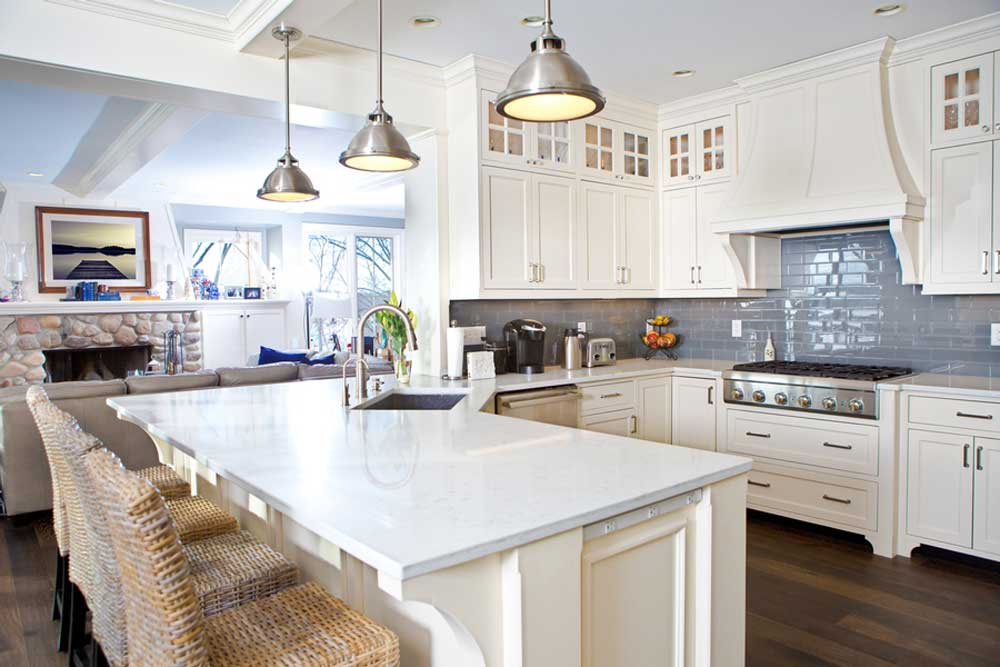Light up your kitchen, light up your life.
Direct Kitchen Distributors • November 11, 2018
Lighting sets the tone for a new kitchen. It affects how the room “feels” when you enter and spend time there. In fact, if the kitchen is not properly lit, the entire design can be compromised because your work surfaces, appliances, cabinets, flooring, back splashes, etc. can look drab. As a result, the appearance of your new kitchen will not provide the look you want.
The manner in which light interacts with the form and texture of objects and materials in your kitchen will produce different effects. That’s one reason why light needs to be layered to create a balance and avoid overly bright or dark areas. You can’t layer light relying on a single fixture located in the center of the kitchen ceiling. Layers are created by surrounding the perimeter of your kitchen with recessed lights and employ pendants, suspended lights, chandeliers and fixtures used to perform tasks under cabinets and above the sink and range or cooktop. Accent lights are typically placed in cabinets, drawers or on walls.

Pendants can be statement-making and serve as functional focal points for specific tasks. Pendants are a natural choice over an island. LED lighting technology has not only brought down the cost, it also has provided tremendous flexibility. LED lights last almost forever, use less energy and are friendlier to the environment.
Lighting makes the appearance of the kitchen special. Lighting can help make smaller spaces appear larger by focusing lights to illuminate vertical surfaces. Using ambient light on the ceilings promotes spaciousness and can draw attention to architectural details such as exposed beams or a statement-making range hood.
Lighting controls are essential to change the feel and look of the kitchen. Dimmers and motion sensors add flexibility and wow factors. Other factors that affect the look and feel of a kitchen are color schemes, materials choices, finishes, paint types and the amount of natural light among other factors. Light will bounce off light color schemes more so than darker ones. Smooth shiny materials will reflect more light than textured matte surfaces. Polished marble will reflect more light than honed black slate. More light is required in spaces with dark or textured finishes.
Good lighting does not draw attention to itself but highlights the other design elements and fixtures in the space. Different light layers may be activated depending on purpose or time of day. For example, during the day, pendants over the island may not be needed at all, but when you start to prepare dinner in the evening all the layers providing ambient, task and accent lighting become necessary.
If you would like to know the right lights to make your new kitchen shine, give us a call at 610-262-7235 or visit our showroom 24/7 at www.directkitchen.com
What Our Clients Say
Beautiful kitchen and bathroom renovations in Whitehall, PA, are our specialty. Call our home remodeling experts today to ask questions and share your ideas.
Proudly Serving
Lehigh Valley, Allentown, Bethlehem, Northampton, Lehighton, Easton, Poconos, Tannersville, Stroudsburg, Quakertown, Reading, Whitehall, Macungie, Center Valley, Saucon Valley
All Rights Reserved
| Designed by Locallogy











